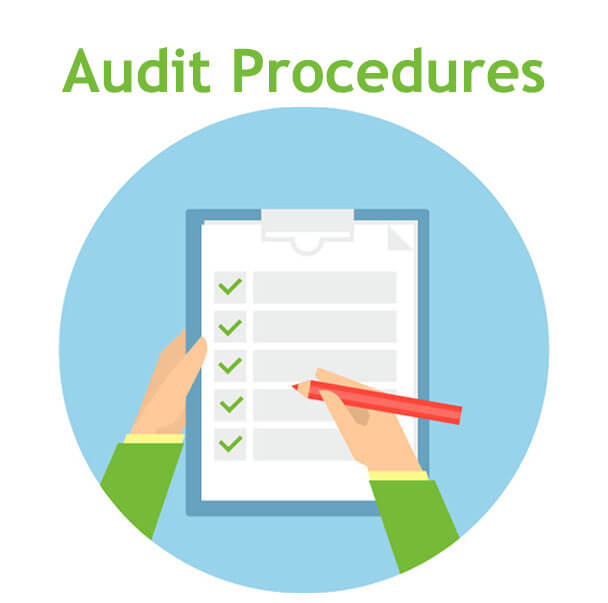[vc_row][vc_column][vc_column_text]Trade receivables are one of the risky areas in an audit assignment, and it should be tackled professionally and tactfully. There might be a high risk for the overstatement of trade receivables to enhance current assets and the corresponding growth in sales.
As an auditor, first, you need to identify what are the audit risks in trade receivables (debtors) balances and then devise suitable audit procedures to handle these audit risks.
Identification of audit risks on trade receivables
Let’s list out possible audit risks in trade receivables as follows, remember to use ‘what could go wrong’ (WCGW) methodology and generate as many risks as possible in the given circumstances:
- Trade receivables stated in the balance sheet may be fictitious and non-existent in reality.
- Trade receivables balance provided by the management may be artificially increased to show higher current assets and higher revenue.
- Party-wise break-up of receivables might not be available.
- Sum of closing balances of individual accounts might not be reconciled with the debtors’ control account total.
- The ageing of the trade receivables may not be provided at all.
- Ageing of trade receivables figures may not be calculated correctly or maybe deliberately distorted.
- Other receivables and prepayments might have been wrongly classified as trade receivables.
- Some expenses might have been incorrectly classified as trade receivables instead of booking in profit & loss.
- Opening balances in the current year may not be matching with the closing balance of the previous accounting period.
- A payment made to a creditor’s account might not have been correctly booked in the creditor’s account; rather, it might have been booked as a receivable debit balance.
- The receivable balances might be outstanding for long, and thus provision is required.
- A receivable related to the next accounting period may be booked in the current accounting period or a receivable pertaining to the current accounting period may be booked in the next accounting period.
- Provision for doubtful and bad debts might not be correctly calculated and booked.
- There is a risk that the amount received from receivables is not recorded in the company’s books and the accounts receivables still show outstanding balances.
- A consistent methodology is not used for calculation of the provision for bad and doubtful debts.
- Certain long outstanding old receivables might have been netted off against trade payables.
- Proper segregation of duties may not exist. For example, if the same person is performing any two or more of following responsibilities, i.e., receipting money, preparing bank reconciliation statement, issuing invoices to the customer, depositing money in the bank accounts etc.
- There might be some logical error in the system, and the ageing report is not correctly generated.
- Receivables might have been booked before conditions of revenue recognition are met in compliance with applicable accounting standard (like IFRS 15 or IFRS 17).

Audit procedures on trade receivables
Well, once you have identified what could go wrong, i.e., audit risks on trade and accounts receivables, it would be relatively easy to devise suitable audit procedures to tackle these risks. Audit procedures should be designed to target audit risks. Each audit procedure should help in catering one or more audit risks, partially or fully.
Below are possible audit procedures for auditing trade receivables:
- Obtain a list of trade receivables, party-wise balances and their respective ageing.
- Obtain a schedule of provision for bad and doubtful debts, broken down into party-wise provisions.
- Review the increasing or decreasing trend of the receivables with previous accounting periods and assess if it is in line with the general economic environment and the company’s financial performance.
- Perform substantive analytical procedures to understand the trends and critical movements in the balances of trade receivables.
- Inquire with the management on the significant variances (if any) in the movement of trade receivables.
- Send balance confirmation letters to a selected sample of receivables.
- Check subsequent positioning of the receivables, i.e., check the movement in the balance after the reporting date but before audit report issuance.
- Keep a sharp eye on any reversals passed after the reporting period.
- Check for any dishonoured cheques of material amounts subsequent to closing period.
- Propose adjustment entries in the receivables balance to the management of the company.
- Critically analyze the assumptions used for the calculation of the provision for doubtful receivables. Use the historical trends, industry practice and subsequent collection details in your assessment.
- Perform cut-off procedures to ensure that receivables are reported in the correct accounting period.
- Critically inquire the reasoning of the change of the provisioning policy, ensuring that the management duly approved the policy.
- Carefully review the movement of any long outstanding balances ensuring that the collection is made and the balance is not just netted off against any payable balance.
- Perform a system check on the ageing report generated from the system, take help of I.T team if required to ensure that the system is calculating ageing correctly.
- Check if receipts are daily reconciled with the amounts collected in cash and bank.
- Check if the cash collection option is limited to authorized individuals only, and a proper reconciliation is prepared.
- Inquire if a receipt is issued against each collection ensuring that no collection remains unaccounted in the books of the accounts of the company.
- Check that opening balances of receivables and provision for doubtful debts are correctly brought forward in the current accounting period.
- Match the balances of the trade receivables break-up and the provision break-up with the financial statements and the notes to the financial statements.
Ageing of receivables
Ageing of trade receivables is the break-up of balances by the number of days with which it is outstanding. For example, if a customer purchased goods worth $1,000 one year ago, and then he purchased another goods of $500 three months ago and did not pay both of these amounts as at the closing date, in that case the ageing of this receivable would $1,000 above 365 days and $500 above 90 days and the total outstanding would be $1,500.

Audit documents related to trade receivables
Below is the list of documents which are usually standard in the process of auditing trade receivables:
- Process document detailed understanding of the receivables cycle
- Management’s policy document containing policy for receivables collections and provisioning
- Confirmation letters for debtors
- Post-dated cheques received from customers
- Bank reconciliation statements and bank statements
- General ledgers of receivables and bank accounts
- Cut-off testing document
[/vc_column_text][/vc_column][/vc_row]


